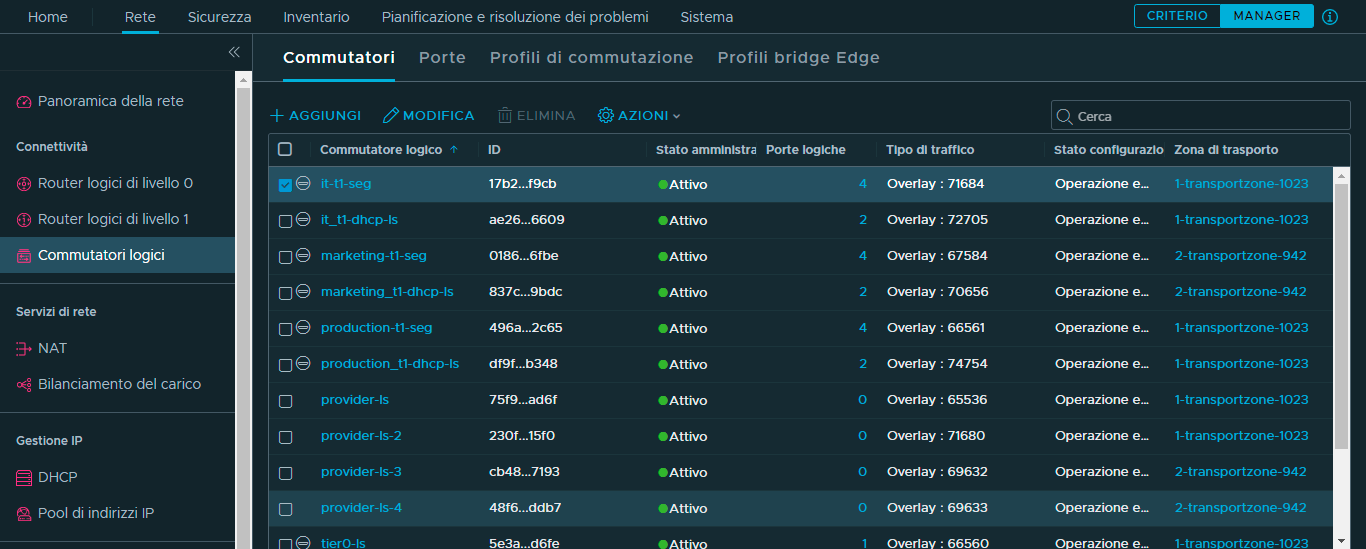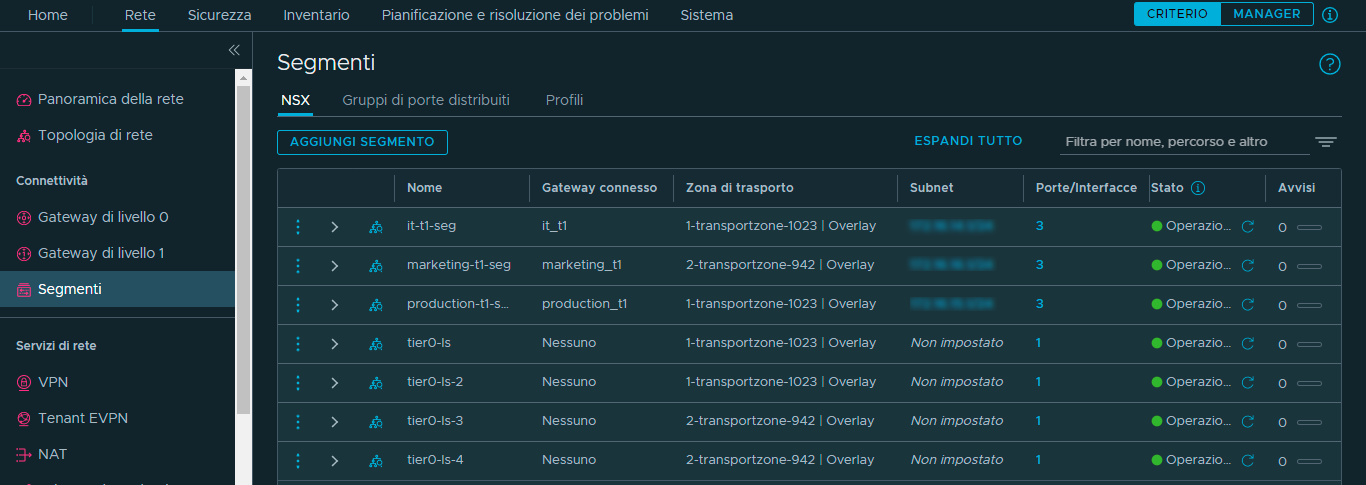È possibile creare un bridge sui segmenti federati per la migrazione.
Prerequisiti
- Configurare un bridge NSX Edge come nodo di trasporto. Vedere Configurazione di un bridge NSX Edge come nodo di trasporto.
- Creare un cluster di NSX Edge. Vedere Creazione di un cluster NSX Edge.
- Configurare le impostazioni dell'interfaccia utente di NSX Manager e impostare Attiva/Disattiva visibilità su Visibile a tutti gli utenti. Vedere "Configurazione delle impostazioni dell'interfaccia utente" nella Guida all'amministrazione di NSX-T Data Center.
Procedura
risultati
- Configurare il commutatore logico per la connessione al bridge Edge. Vedere Configurazione del commutatore logico per la connessione al bridge Edge.
- Verificare la connettività attraverso il bridge. Vedere Verifica della connettività attraverso il bridge di livello 2.
Rimozione del bridge dopo la migrazione
Dopo la migrazione, rimuovere gli oggetti che non sono più necessari.
- Effettuare la chiamata PUT API seguente. L'ID della porta logica (55ac50fa-c5e1-413b-b1ec-2d85619cf5c3) è nella risposta della chiamata API POST nel passaggio 5 precedente. Utilizzare la risposta della chiamata API POST come corpo di questa chiamata, ma senza il parametro "attachment".
PUT https://<nsx-manager>/api/v1/logical-ports/55ac50fa-c5e1-413b-b1ec-2d85619cf5c3 { "logical_switch_id": "dd2841db-dff9-4927-834f-11b5ac8803d4", "admin_state": "UP", "address_bindings": [], "switching_profile_ids": [ { "key": "SwitchSecuritySwitchingProfile", "value": "47ffda0e-035f-4900-83e4-0a2086813ede" }, { "key": "SpoofGuardSwitchingProfile", "value": "fad98876-d7ff-11e4-b9d6-1681e6b88ec1" }, { "key": "IpDiscoverySwitchingProfile", "value": "64814784-7896-3901-9741-badeff705639" }, { "key": "MacManagementSwitchingProfile", "value": "1e7101c8-cfef-415a-9c8c-ce3d8dd078fb" }, { "key": "PortMirroringSwitchingProfile", "value": "93b4b7e8-f116-415d-a50c-3364611b5d09" }, { "key": "QosSwitchingProfile", "value": "f313290b-eba8-4262-bd93-fab5026e9495" } ], "ignore_address_bindings": [], "internal_id": "55ac50fa-c5e1-413b-b1ec-2d85619cf5c3", "resource_type": "LogicalPort", "id": "55ac50fa-c5e1-413b-b1ec-2d85619cf5c3", "display_name": "55ac50fa-c5e1-413b-b1ec-2d85619cf5c3", "_create_user": "admin", "_create_time": 1638556071051, "_last_modified_user": "admin", "_last_modified_time": 1638556071051, "_system_owned": false, "_protection": "NOT_PROTECTED", "_revision": 0 } - Eliminare gli endpoint di porta e bridge con le seguenti chiamate API. L'ID della porta e l'ID dell'endpoint di bridge sono nella risposta della chiamata API POST nel passaggio 5 precedente.
DEL https://<nsx-manager>/api/v1/logical-ports/55ac50fa-c5e1-413b-b1ec-2d85619cf5c3 DEL https://<nsx-manager>/api/v1/bridge-endpoints/7e9c3517-f15b-490b-b14e-5ec356e92655





